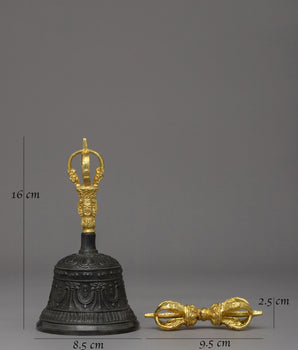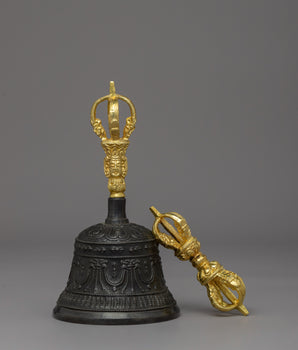





Stupa Tibetan Buddhist Shrine | A Sacred Symbol of Enlightenment
Handcrafted Stupa Tibetan Buddhist Shrine | Shrine for Meditation
--------------------------------------------------
Size: 22cm (Height) x 10.5cm (Width)
Weight: 1.07kg
Materials: Oxidized Copper
--------------------------------------------------
About Our Ritual Item :
The Stupa Tibetan Buddhist Shrine is a beautifully handcrafted piece made from oxidized copper, offering both spiritual significance and artistic beauty. Standing at 22 cm in height and 10.5 cm in width, this stunning shrine serves as a symbol of enlightenment and a focal point for meditation and spiritual practices. Weighing 1.07 kg, this sturdy and intricate shrine is the perfect addition to any sacred space, whether for personal use or as a gift for those who appreciate Tibetan Buddhist traditions.
The Tibetan Buddhist Stupa is meticulously crafted with detailed designs, reflecting the rich cultural heritage of Tibetan Buddhism. The oxidized copper finish not only gives it a unique appearance but also enhances its spiritual energy, making it ideal for enhancing meditation, prayers, or rituals. Its design is inspired by the traditional Tibetan stupa, a sacred structure symbolizing the path to enlightenment, making it a powerful and meaningful accessory in your spiritual journey. This Stupa Tibetan Buddhist Shrine is both a gorgeous sculpture and a powerful symbol of spiritual rebirth. This shrine, whether used for meditation, as a decorative accent for your altar, or as a sacred object for rituals, is a continual reminder of Tibetan Buddhism's teachings.
Introduction To Stupa :
Before Buddhism, great teachers were buried in mounds. Some were cremated, but sometimes they were buried in a seated, meditative position. The mound of earth covered them up. Thus, the domed shape of the stupa came to represent a person seated in meditation, much as the Buddha was when he achieved Enlightenment and knowledge of the Four Noble Truths. The base of the stupa represents his crossed legs as he sat in a meditative pose. The middle portion is the Buddha’s body, and the top of the mound, where a pole rises from the apex surrounded by a small fence, represents his head. Before images of the human Buddha were created, reliefs often depicted practitioners demonstrating devotion to a stupa.
How to Set Up Your Buddhist Shrine?
• Find a clean, quiet, and uncluttered spot
• Set up an altar table, and cover it with an altar cloth that calls to you
• Place your sacred item at the center
• If you want a more elaborate altar, you can put a Stupa as well.















